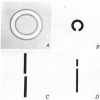Abstract
1. Binocular summation was studied in human subjects using a batter of vision tests. Two tests assessed detection, another three acuity, one hyperacuity and one pattern recognition. 2. The magnitude of summation was consistent with, or exceeded, the level predicted from quadratic summation for both detection tests. 3. The summation factor was significantly smaller in the resolution tests than in the detection tests. Hyperacuity showed a large individual variation. 4. Spatial filtering of acuity targets did not influence summation. 5. No summation was found in the pattern recognition test. 6. It is argued that the degree of summation is related to the complexity of the visual task. A simple task yields a larger binocular summation than a more complex one. This may be related to the level of processing in the primary visual cortex.
Full text
PDF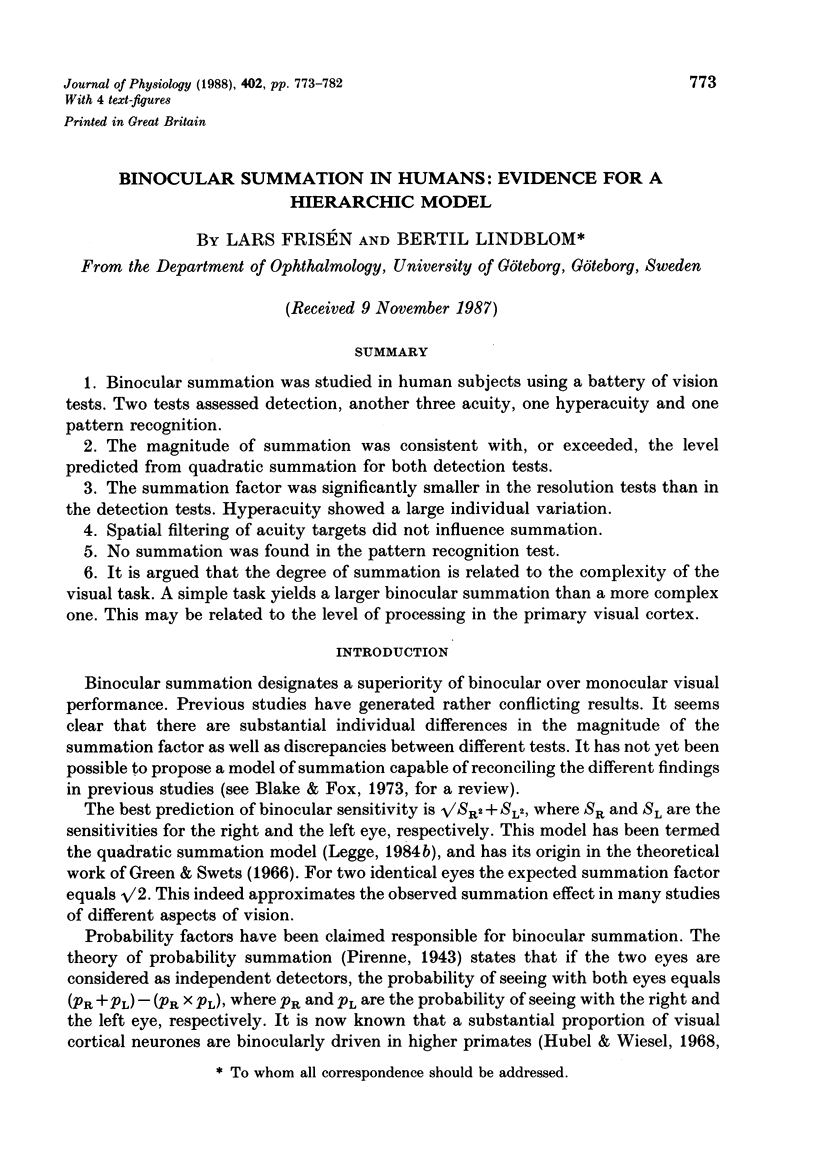
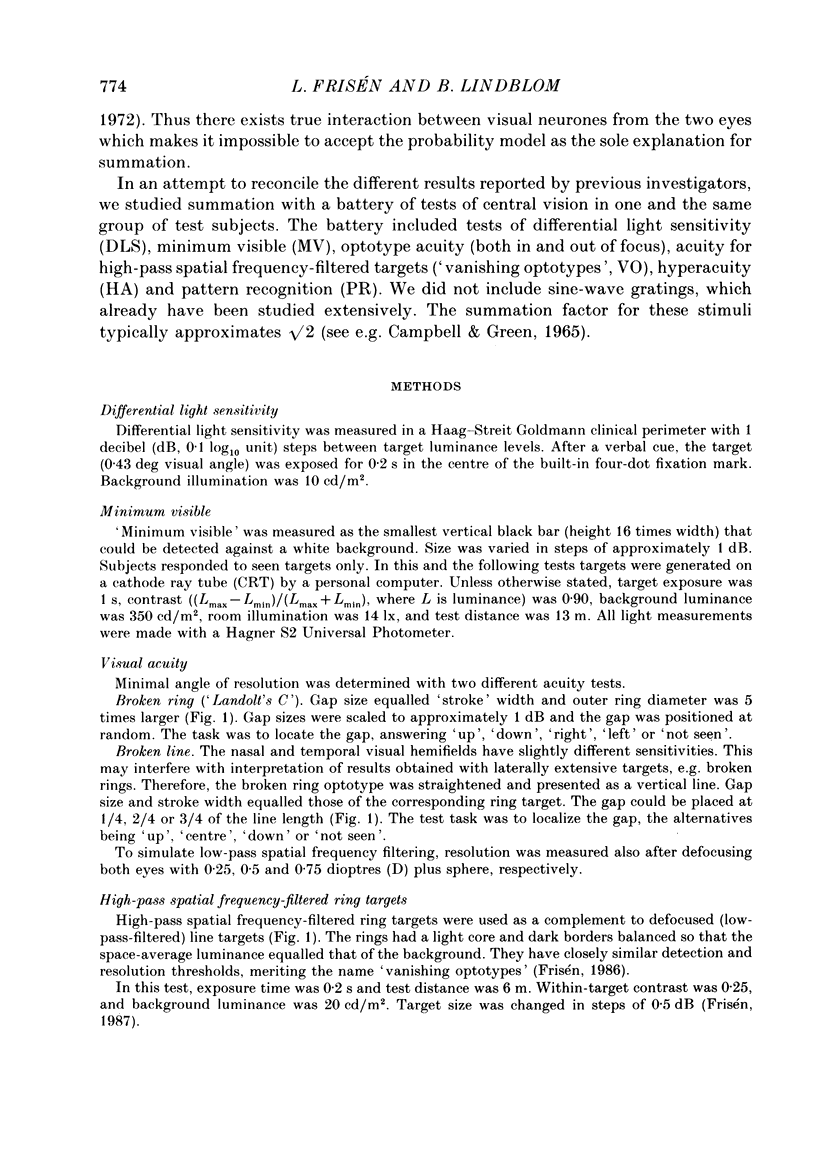
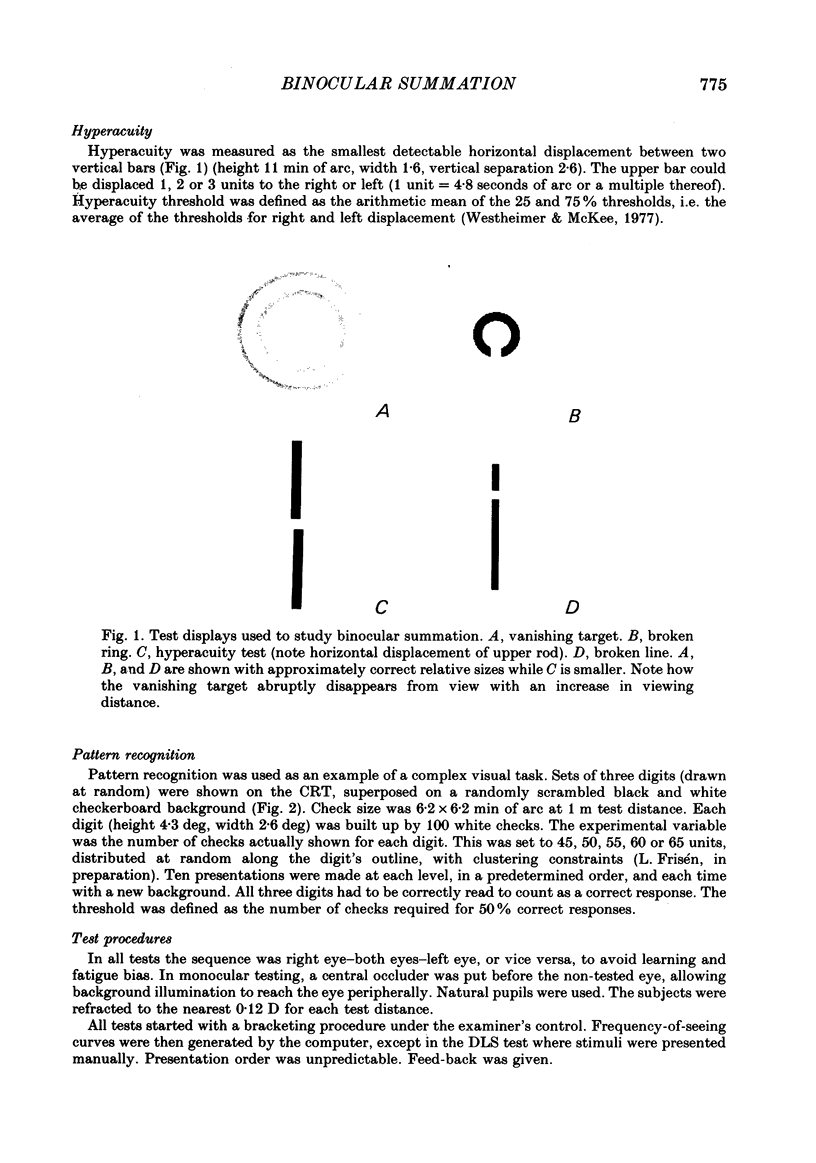
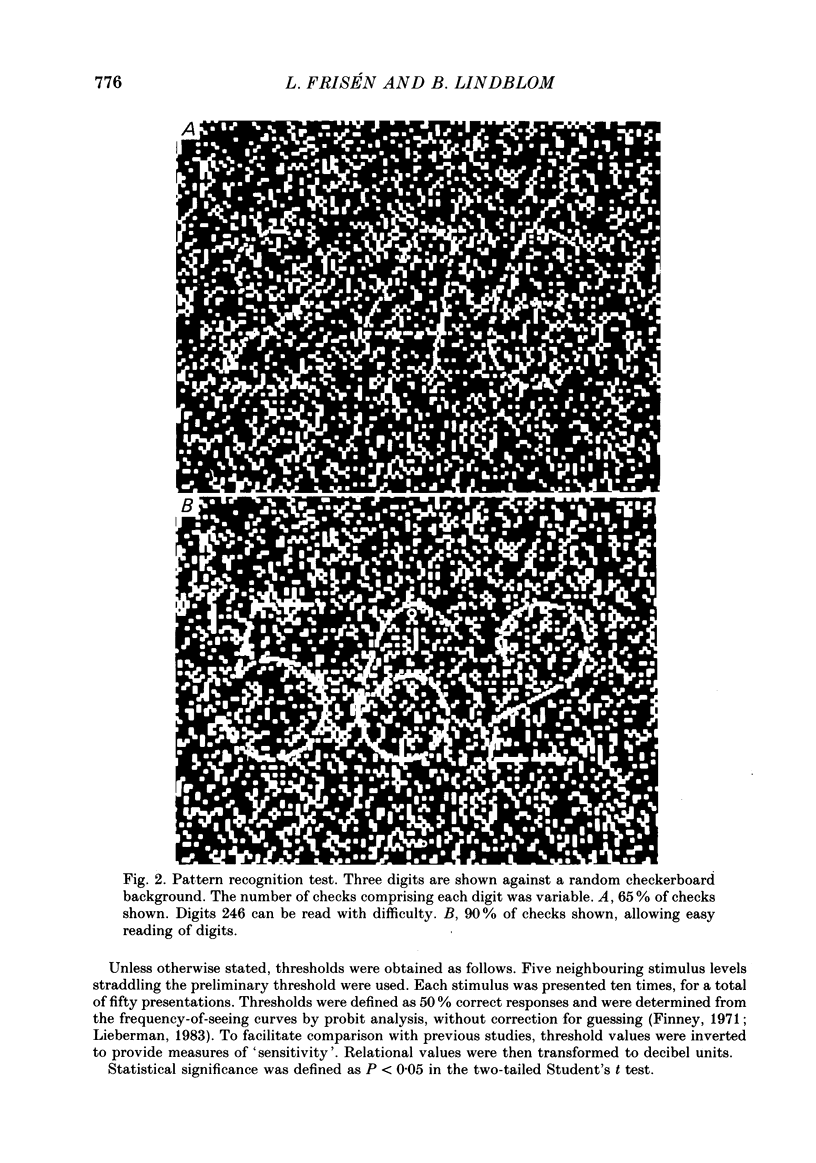

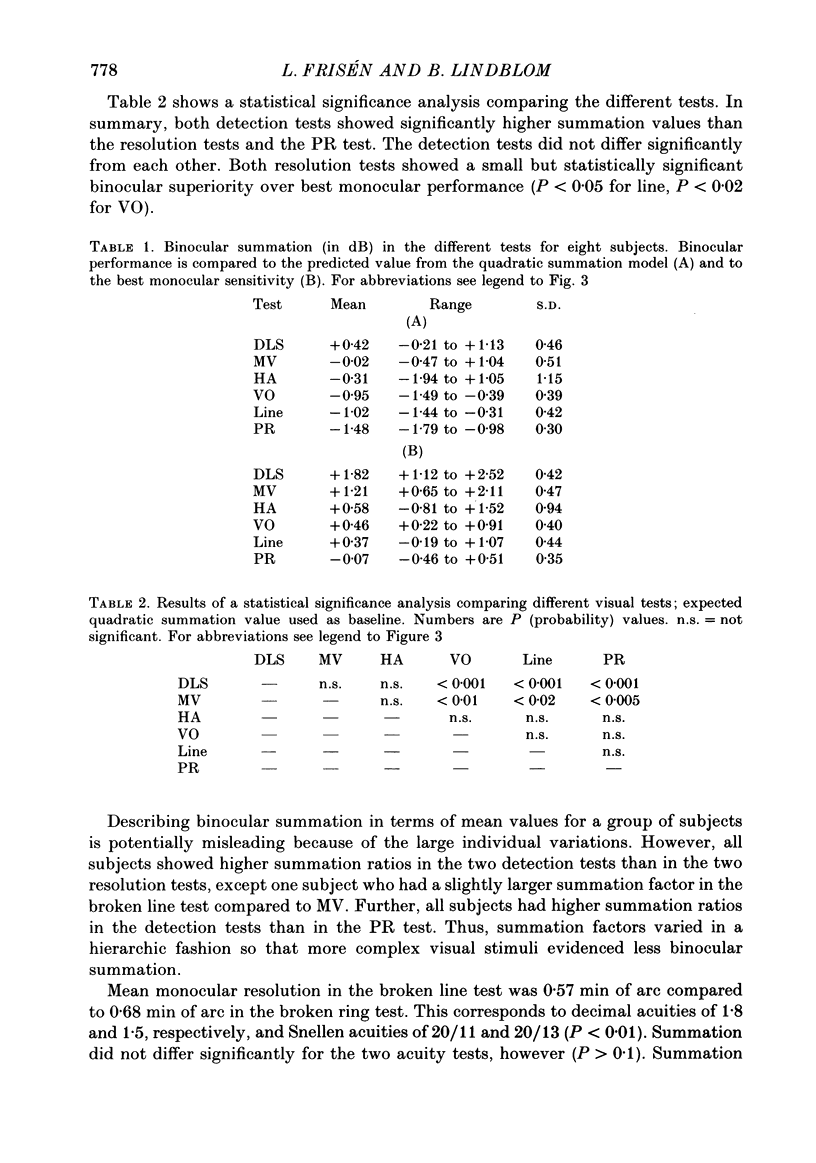
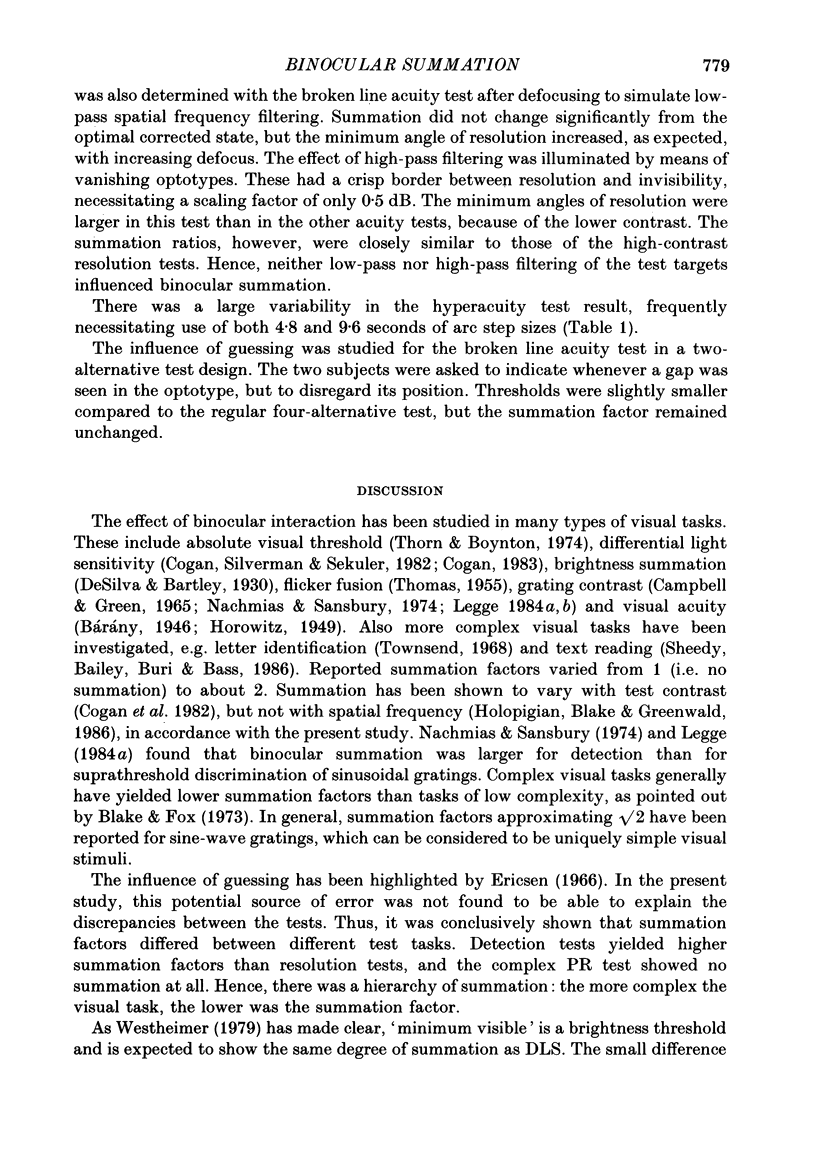
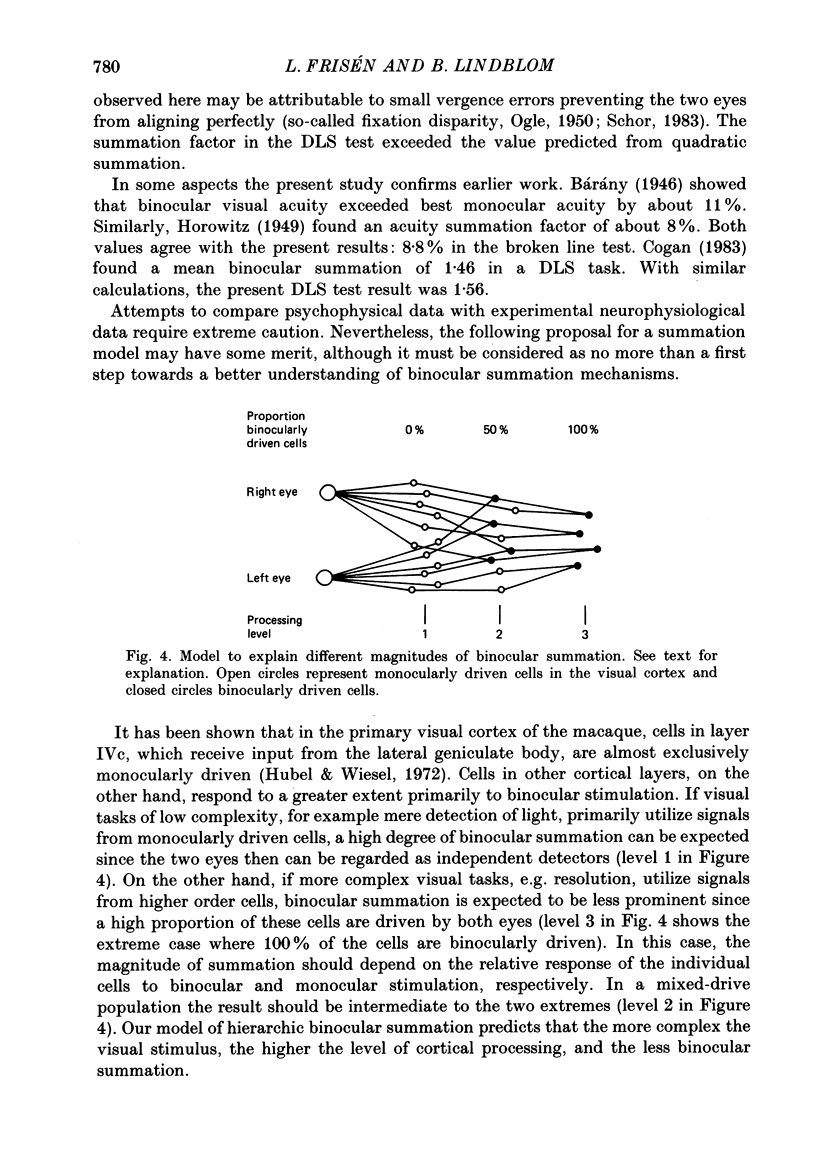
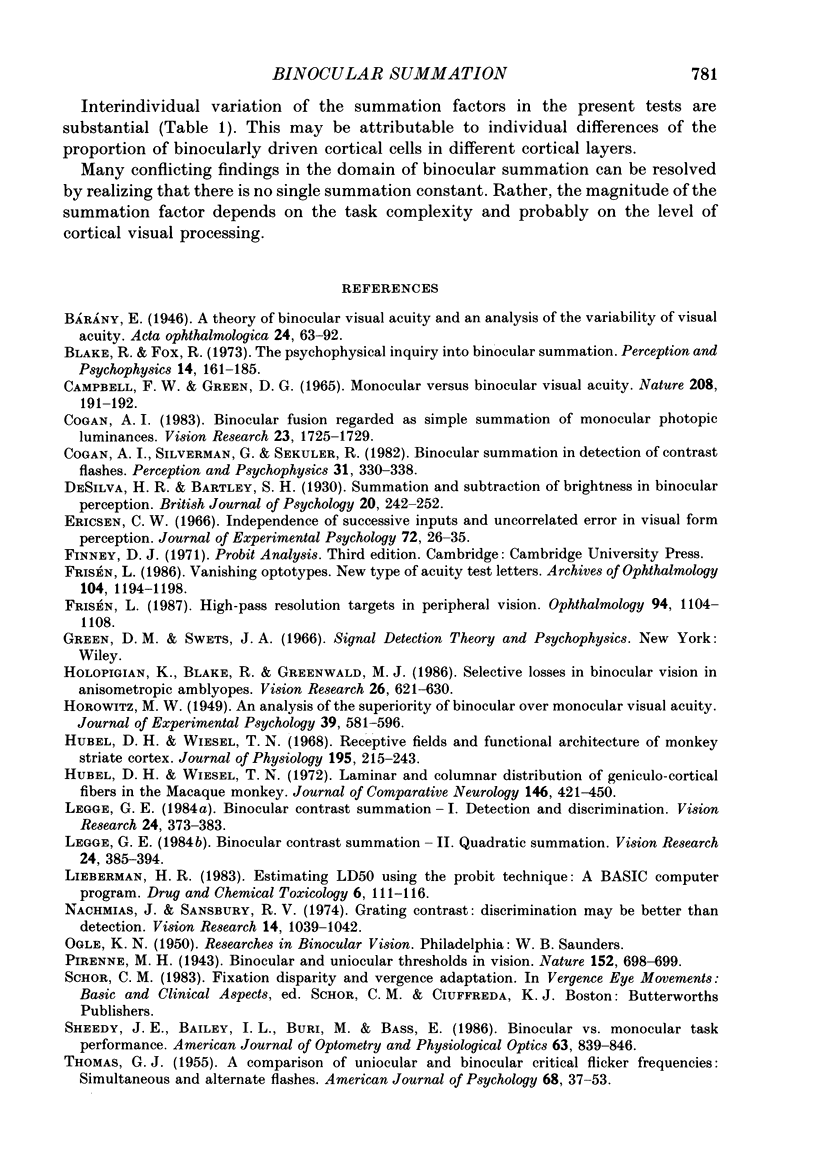
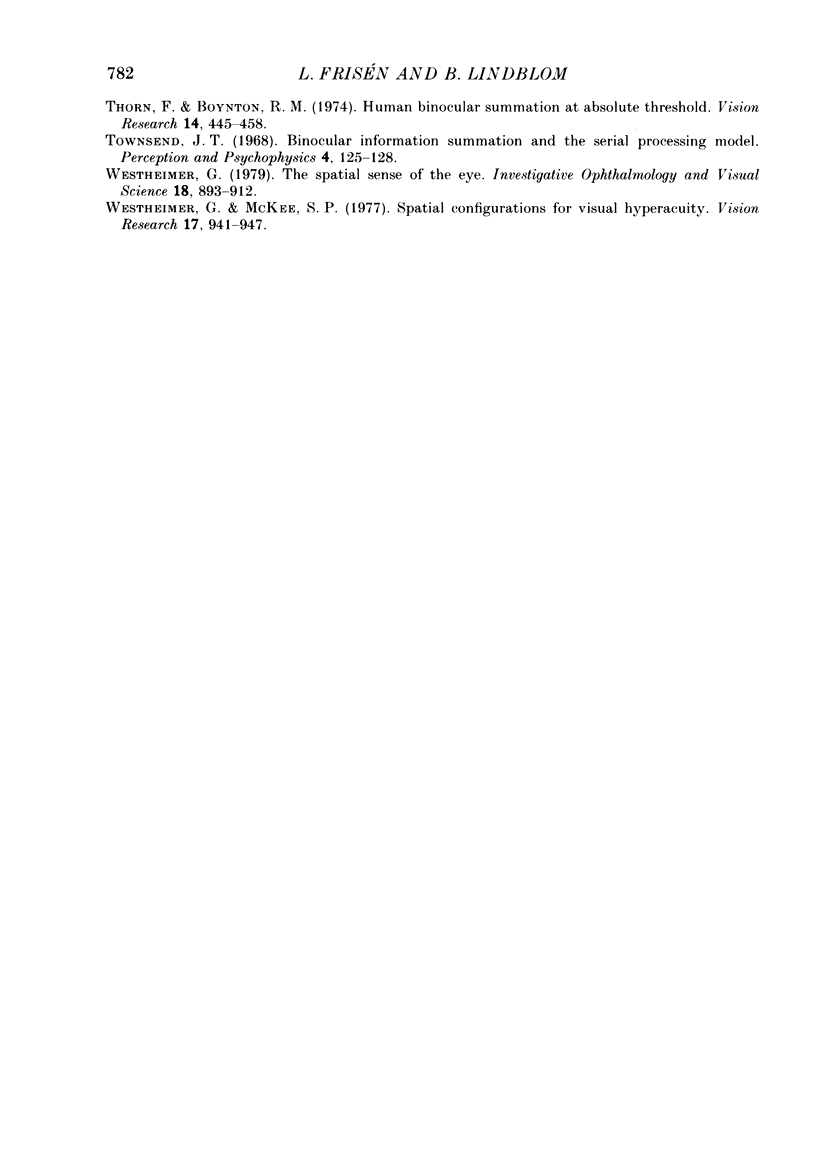
Images in this article
Selected References
These references are in PubMed. This may not be the complete list of references from this article.
- Campbell F. W., Green D. G. Monocular versus binocular visual acuity. Nature. 1965 Oct 9;208(5006):191–192. doi: 10.1038/208191a0. [DOI] [PubMed] [Google Scholar]
- Cogan A. I. Binocular fusion regarded as simple summation of monocular photopic luminances. Vision Res. 1983;23(12):1725–1729. doi: 10.1016/0042-6989(83)90189-x. [DOI] [PubMed] [Google Scholar]
- Cogan A. I., Silverman G., Sekuler R. Binocular summation in detection of contrast flashes. Percept Psychophys. 1982 Apr;31(4):330–338. doi: 10.3758/bf03202656. [DOI] [PubMed] [Google Scholar]
- Eriksen C. W. Independence of successive inputs and uncorrelated error in visual form perception. J Exp Psychol. 1966 Jul;72(1):26–35. doi: 10.1037/h0023316. [DOI] [PubMed] [Google Scholar]
- Frisén L. High-pass resolution targets in peripheral vision. Ophthalmology. 1987 Sep;94(9):1104–1108. doi: 10.1016/s0161-6420(87)33317-2. [DOI] [PubMed] [Google Scholar]
- HOROWITZ M. W. An analysis of the superiority of binocular over monocular visual acuity. J Exp Psychol. 1949 Oct;39(5):581–596. doi: 10.1037/h0056892. [DOI] [PubMed] [Google Scholar]
- Holopigian K., Blake R., Greenwald M. J. Selective losses in binocular vision in anisometropic amblyopes. Vision Res. 1986;26(4):621–630. doi: 10.1016/0042-6989(86)90010-6. [DOI] [PubMed] [Google Scholar]
- Hubel D. H., Wiesel T. N. Laminar and columnar distribution of geniculo-cortical fibers in the macaque monkey. J Comp Neurol. 1972 Dec;146(4):421–450. doi: 10.1002/cne.901460402. [DOI] [PubMed] [Google Scholar]
- Hubel D. H., Wiesel T. N. Receptive fields and functional architecture of monkey striate cortex. J Physiol. 1968 Mar;195(1):215–243. doi: 10.1113/jphysiol.1968.sp008455. [DOI] [PMC free article] [PubMed] [Google Scholar]
- Legge G. E. Binocular contrast summation--I. Detection and discrimination. Vision Res. 1984;24(4):373–383. doi: 10.1016/0042-6989(84)90063-4. [DOI] [PubMed] [Google Scholar]
- Legge G. E. Binocular contrast summation--II. Quadratic summation. Vision Res. 1984;24(4):385–394. doi: 10.1016/0042-6989(84)90064-6. [DOI] [PubMed] [Google Scholar]
- Lieberman H. R. Estimating LD50 using the probit technique: a BASIC computer program. Drug Chem Toxicol. 1983;6(1):111–116. doi: 10.3109/01480548309072465. [DOI] [PubMed] [Google Scholar]
- Nachmias J., Sansbury R. V. Letter: Grating contrast: discrimination may be better than detection. Vision Res. 1974 Oct;14(10):1039–1042. doi: 10.1016/0042-6989(74)90175-8. [DOI] [PubMed] [Google Scholar]
- Sheedy J. E., Bailey I. L., Buri M., Bass E. Binocular vs. monocular task performance. Am J Optom Physiol Opt. 1986 Oct;63(10):839–846. doi: 10.1097/00006324-198610000-00008. [DOI] [PubMed] [Google Scholar]
- THOMAS G. J. A comparison of uniocular and binocular critical flicker frequencies: simultaneous and alternate flashes. Am J Psychol. 1955 Mar;68(1):37–53. [PubMed] [Google Scholar]
- Thorn F., Boynton R. M. Human binocular summation at absolute threshold. Vision Res. 1974 Jul;14(7):445–458. doi: 10.1016/0042-6989(74)90033-9. [DOI] [PubMed] [Google Scholar]
- Westheimer G., McKee S. P. Spatial configurations for visual hyperacuity. Vision Res. 1977;17(8):941–947. doi: 10.1016/0042-6989(77)90069-4. [DOI] [PubMed] [Google Scholar]
- Westheimer G. The spatial sense of the eye. Proctor lecture. Invest Ophthalmol Vis Sci. 1979 Sep;18(9):893–912. [PubMed] [Google Scholar]



